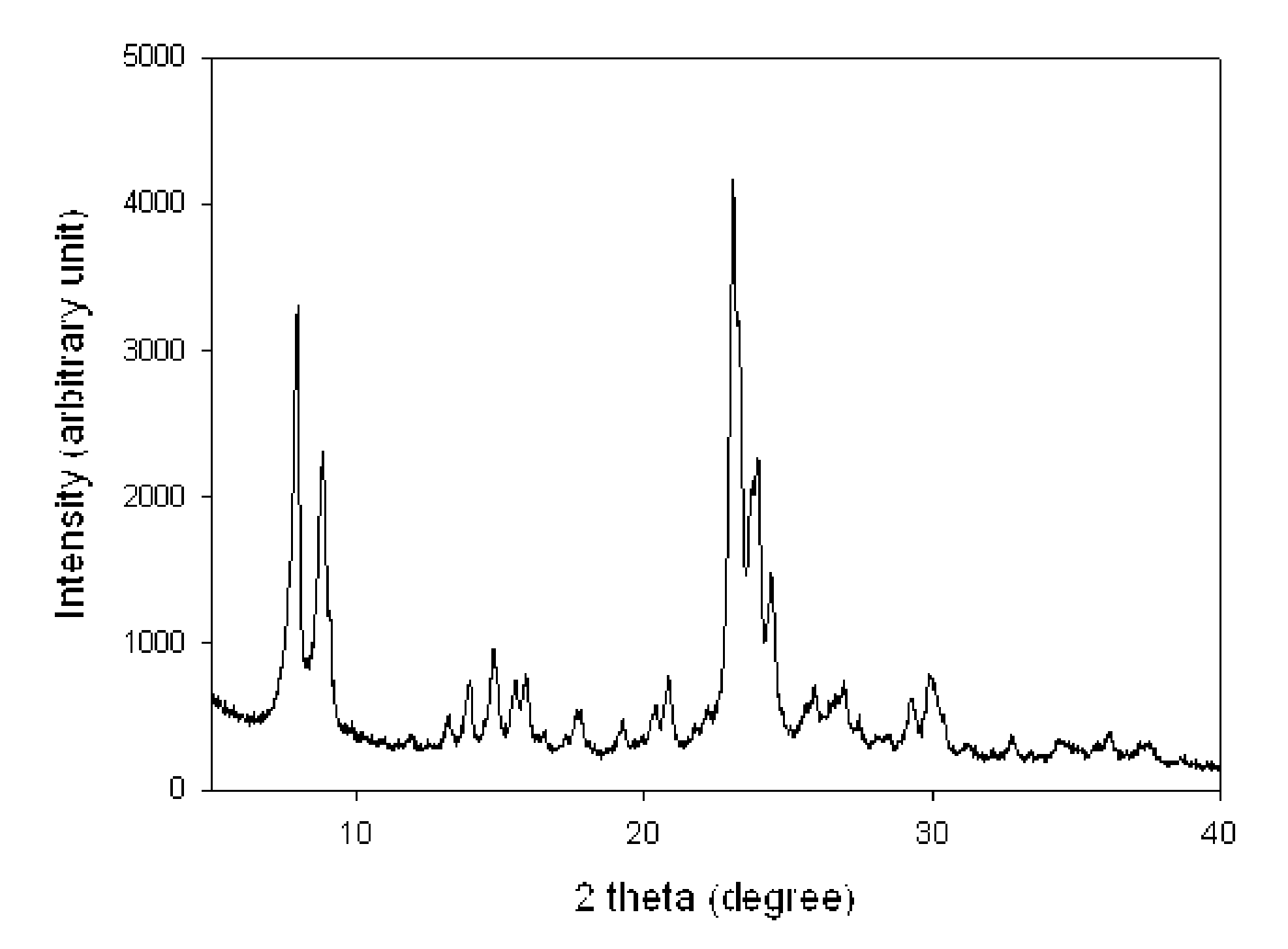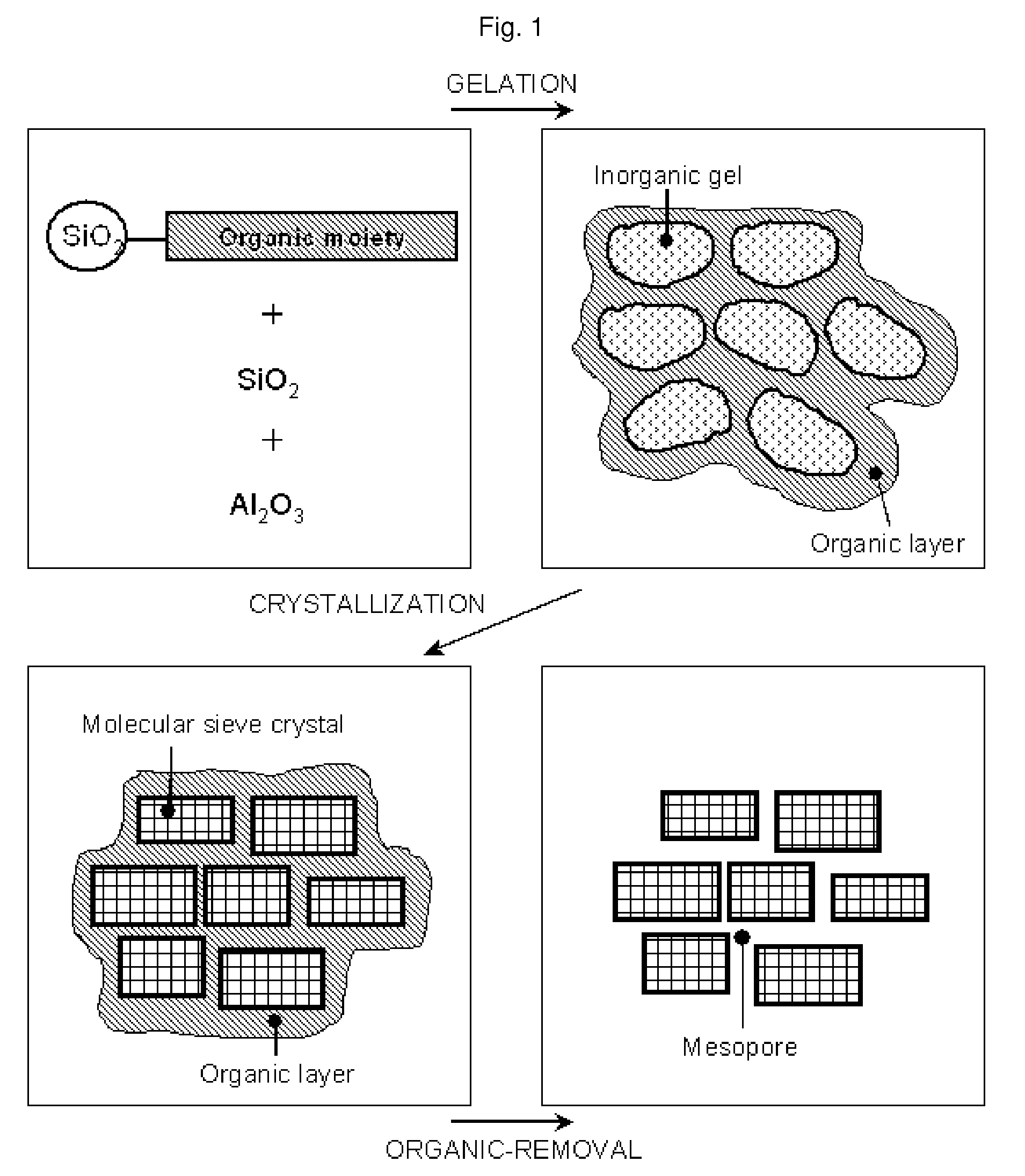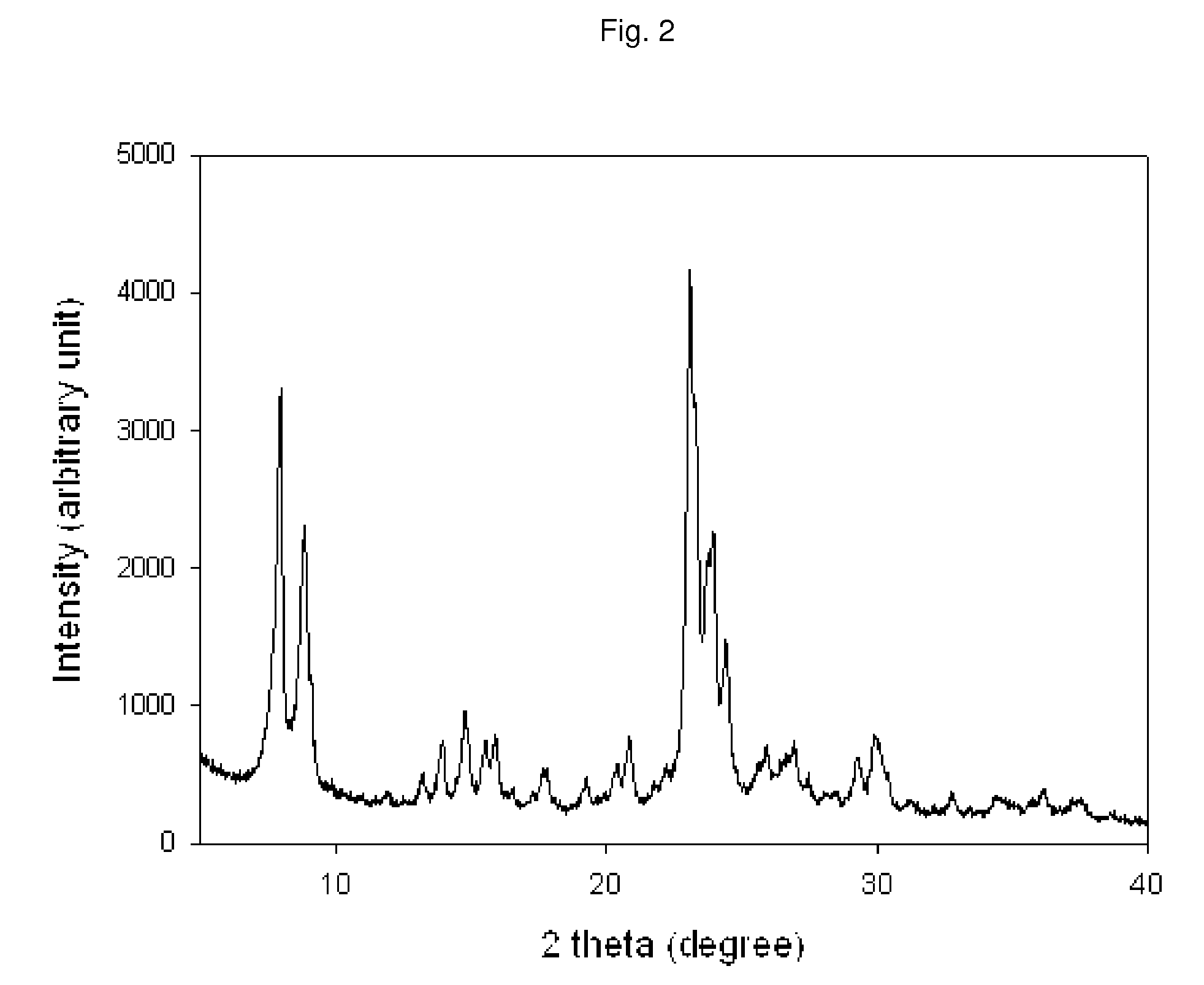Method of the preparation of microporous crystalline molecular sieve possessing mesoporous frameworks
a technology of crystalline molecular sieves and microporous structures, which is applied in the direction of molecular sieves silica-polymorphs, physical/chemical process catalysts, silicon compounds, etc., can solve the problems of low utilization rate, reaction rate, and low diffusion rate of zeolite molecules, so as to facilitate the diffusion and adsorption of organic macromolecules and achieve superior separation and catalytic reaction effects
- Summary
- Abstract
- Description
- Claims
- Application Information
AI Technical Summary
Benefits of technology
Problems solved by technology
Method used
Image
Examples
example 1
Synthesis of Mesoporous MFI-Type Aluminosilicate Using Various Organosilanes
[0101]TPOAC, TPABr, Ludox AS-40 (40 wt % SiO2), sodium hydroxide, sodium aluminate (53 wt % Al2O3, 43 wt % Na2O), sulfuric acid and distilled water were mixed to form a gel mixture with the following molar composition:
1Al2O3:2TPA2O:10Na2O:40 SiO2:1800H2O:8H2SO4:1.6TPOAC.
[0102]After aged for 3 h at room temperature, the resultant composition was introduced into a stainless steel autoclave and heated to 170° C. for 2 d. After autoclave was cooled to room temperature, the product was suspended in water, filtered by suction, resuspended in water and filtered again. Then, the product was dried at 110° C. for 10 h. Organic moieties was removed by calcination at 550° C. for 4 h.
[0103]XRD pattern of resultant product (FIG. 2) corresponded to the highly crystalline MFI structure. SEM images were obtained without gold plating under low acceleration (1-5 kV) voltage, which provided accurate surface images of the result...
example 2
Synthesis of Mesoporous MFI-Type Aluminosilicate by Using a Mixture of Organosilane and Surfactant
[0107]CTABr, CPTMS, TPABr, Ludox AS-40 (40 wt % SiO2), sodium hydroxide, sodium aluminate (53 wt % Al2O3, 43 wt % Na2O), sulfuric acid and distilled water were mixed to form a gel mixture with the molar composition as described in No. 3 of the above Table 1.
[0108]Zeolite was crystallized from this gel composition, and the product was collected and calcined as in Example 1.
[0109]The calcined product was a highly mesoporous MFI zeolite (mesopore volume=0.15 mL / g). However, when the surfactant was omitted in the gel composition, no significant mesoporosity was detected in the prepared zeolite.
example 3
Synthesis of Mesoporous MFI-Type Aluminosilicate with Organic-Functionalized Colloidal Silica as Silica Source
[0112]This example illustrates that a polymeric form of organic-functionalized silica source can also be used as silica source to synthesize molecular sieves with secondary mesopores. Fumed silica was functionalized with TPOAC by refluxing in toluene solution. The functionalized-silica was mixed with TPABr, sodium hydroxide, sodium aluminate (53 wt % Al2O3, 43 wt % Na2O) and distilled water. The molar composition of the resultant gel was:
1Al2O3:2TPA2O:10Na2O:40 SiO2:1800H2O:8H2SO4:1.6TPOAC
[0113]MFI-type zeolite was crystallized from this gel composition, and the product was collected and calcined as in Example 1. The product possessed mesopores with diameters in the range of 6-8 nm, and the mesopore volume was 0.34 mL / g.
PUM
| Property | Measurement | Unit |
|---|---|---|
| diameter | aaaaa | aaaaa |
| sizes | aaaaa | aaaaa |
| diameter | aaaaa | aaaaa |
Abstract
Description
Claims
Application Information
 Login to View More
Login to View More - R&D
- Intellectual Property
- Life Sciences
- Materials
- Tech Scout
- Unparalleled Data Quality
- Higher Quality Content
- 60% Fewer Hallucinations
Browse by: Latest US Patents, China's latest patents, Technical Efficacy Thesaurus, Application Domain, Technology Topic, Popular Technical Reports.
© 2025 PatSnap. All rights reserved.Legal|Privacy policy|Modern Slavery Act Transparency Statement|Sitemap|About US| Contact US: help@patsnap.com



